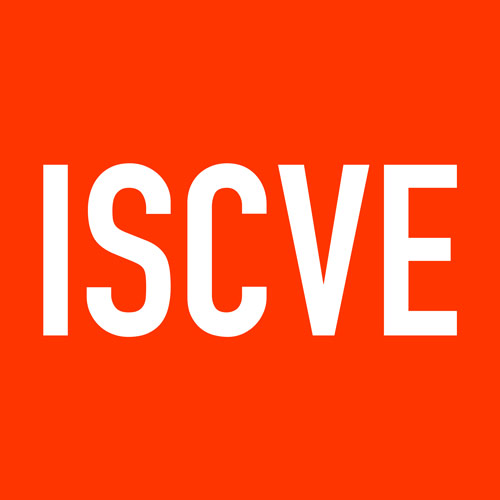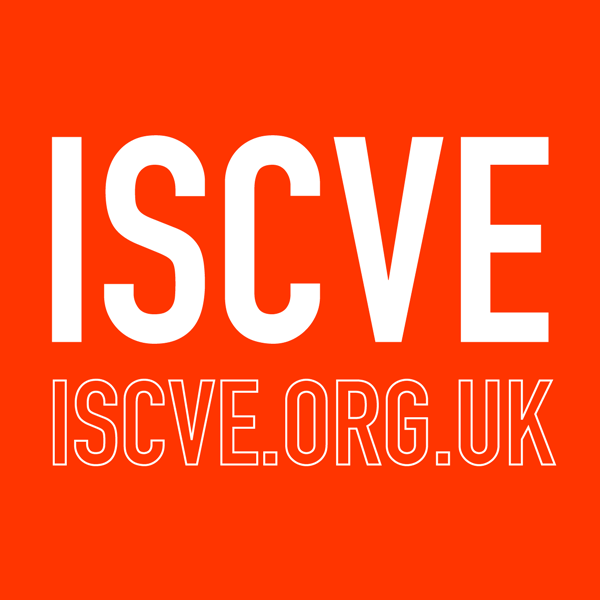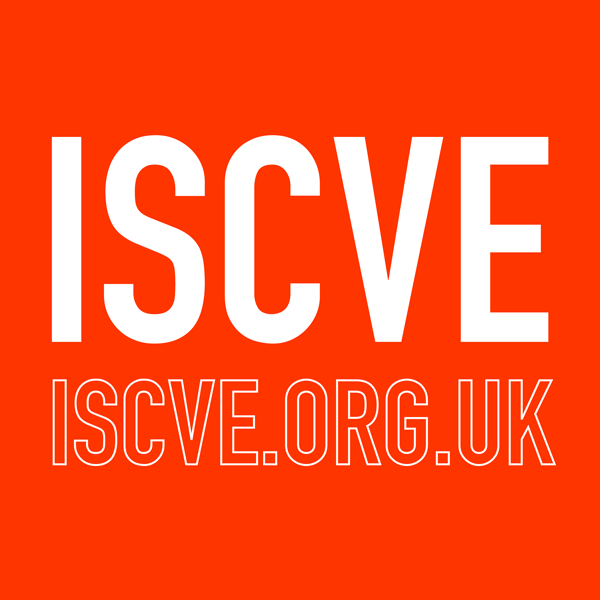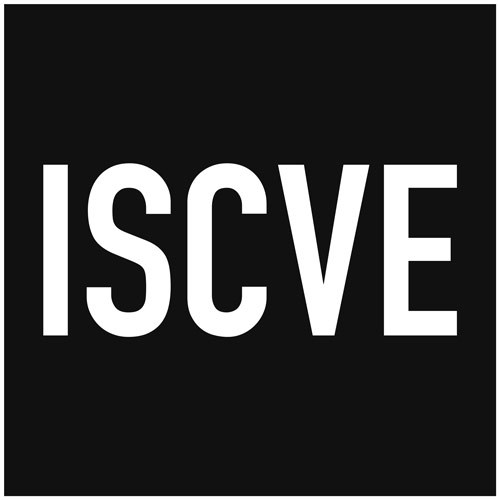British and International Standards
A number of British, European and International Standards apply to the sound, communications and visual industries with key ISCVE members part of the standards committees.
Keeping up to date with current standards and practice is vital and ISCVE members are generally informed when changes are planned or when new or updated standards are released.
Our aim is to help ensure that sound, communication and visual systems are designed to meet their performance requirements, are safe in use and provide a quality experience for users. By providing members with information about current standards and practice, and advice on how best to apply them, ISCVE enables members to create systems that meet the highest possible standards.
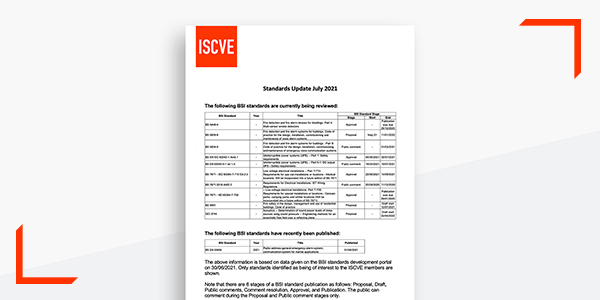
British and European Standards
Instructions to register to the BSI Standards Development Portal guide document can be found here: Once registered here, you can view the various stages of development of any Standard, opt to receive regular updates on that Standard and even comment on drafts at public comment stage.
BS 4142 – Methods for rating and assessing industrial and commercial sound
BS 5446-1 – Fire detection and fire alarm devices for dwellings. Specification for smoke alarms
BS 5446-2 – Fire detection and fire alarm devices for dwellings. Specification for heat alarms
BS 5446-3 – Detection and alarm devices for dwellings. Specification for fire alarm and carbon monoxide alarm systems for deaf and hard of hearing people
BS 5446-4 – Fire detection and fire alarm devices for dwellings. Part 4: Multi-sensor smoke detectors
BS 5839-1 – Fire detection and fire alarm systems for buildings. Code of practice for design, installation, commissioning and maintenance of systems in non-domestic premises
BS 5839-6 – Fire detection and fire alarm systems for buildings. Part 6: Code of practice for the design, installation, commissioning and maintenance of fire detection and fire alarm systems in domestic buildings
BS 5839-8 – Fire detection and fire alarm systems for buildings. Code of practice for the design, installation, commissioning and maintenance of voice alarm systems
BS 5839-9 – Fire detection and fire alarm systems for buildings . Part 9: Code of practice for the design, installation, commissioning and maintenance of emergency voice communication systems
BS 6259 – Code of practice for the design, planning, installation, testing and maintenance of sound systems
BS 7594 – Code of practice for audio-frequency induction-loop systems (AFILS)
BS 7671 – Requirements for Electrical Installations. IET Wiring Regulations
BS 7827 – Designing, specifying, maintaining and operating emergency sound systems for sports grounds, large public buildings, and venues – Code of Practice
BS 7909 – Temporary electrical systems for entertainment and related purposes – Code of practice
BS 8300 – Design of buildings and their approaches to meet the needs of disabled people. Code of practice
BS 8300-1 – Design of an accessible and inclusive built environment. External environment. Code of practice
BS 8300-2 – Design of an accessible and inclusive built environment. Buildings. Code of practice
BS 8629 – Code of practice for the design, installation, commissioning and maintenance of evacuation alert systems for use by fire and rescue services in buildings containing flats
BS 9991 – Fire safety in the design, management and use of residential buildings. Code of practice
BS 9999 – Fire safety in the design, management and use of residential buildings. Code of practice
BS EN 50695 – Public-address-general-emergency-alarm-system, communication-system for marine applications
BS EN 50849 – Sound systems for emergency purposes
BS EN 54-1 – Fire detection and fire alarm systems. Introduction
BS EN 54-16 – Fire detection and fire alarm systems. Part 16: Voice alarm control and indicating equipment
BS EN 54-2 – Fire detection and fire alarm systems. Control and indicating equipment
BS EN 54-21 – Fire detection and fire alarm systems. Alarm transmission and fault warning routing equipment
BS EN 54-23 – Fire detection and fire alarm systems. Fire alarm devices. Visual alarm devices
BS EN 54-24 – Fire detection and fire alarm systems. Components of voice alarm systems. Loudspeakers
BS EN 54-25 – Fire detection and fire alarm systems. Components using radio links
BS EN 54-3 – Fire detection and fire alarm systems. Fire alarm devices. Sounders
BS EN 54-4 – Fire detection and fire alarm systems. Power supply equipment
BS EN 60268-3 – Sound system equipment. Amplifiers
BS EN 60268-5 – Sound system equipment. Part 5: Loudspeakers
BS EN 60268-7 – Sound system equipment. Headphones and earphones
BS EN 61672-1 – Electro acoustics – Sound level meters. Part 1: Specifications
BS EN 62040-4 – Uninterruptible power systems (UPS). Environmental aspects. Requirements and reporting
BS EN 62040-5-1 – Uninterruptible power systems (UPS). – Part 5-1: DC output UPS – Safety requirements
BS EN 62489 – Electro acoustics. Audio-frequency induction loop systems for assisted hearing. Methods of measuring and specifying the performance of system components
BS EN 62489-1 – Electro acoustics. Audio-frequency induction loop systems for assisted hearing. Methods of measuring and specifying the performance of system components
BS EN 62489-2 – Electroacoustics. Audio-frequency induction loop systems for assisted hearing. Methods of calculating and measuring the low-frequency magnetic field emissions from the loop for assessing conformity with guidelines on limits for human exposure
BS EN IEC 60118-4 – Electroacoustics. Hearing aids. Induction-loop systems for hearing aid purposes. System performance requirements
BS EN IEC 60268-16 – Sound system equipment. – Part 16: Objective rating of speech intelligibility by speech transmission index (TA 20)
BS EN IEC 60268-4 – Sound system equipment. Microphones
BS EN IEC 62040-1 – Uninterruptible power systems (UPS). Part 1: Safety requirements
BS EN IEC 62040-2 – Uninterruptible power systems (UPS). Electromagnetic compatibility (EMC) requirements
BS EN IEC 62040-3 – Uninterruptible power systems (UPS). Method of specifying the performance and test requirements
BS EN IEC 63296-2 – Portable multimedia equipment – Determination of battery duration – Part 2: Headphones and earphones with active noise cancelling functions
BS EN ISO 10848-2 – Acoustics – Laboratory and field measurement of flanking transmission for airborne, impact and building service equipment sound between adjoining rooms. Application to to Type B elements when the junction has a small influence.
BS EN ISO 14001 – Environmental management systems. Requirements with guidance for use
BS EN ISO 16283-1 – Acoustics. Field measurement of sound insulation in buildings and of building elements. Airborne sound insulation
BS EN ISO 18233 – Acoustics – Application of new measurement methods in building and room acoustics
BS EN ISO 3745 – Acoustics. Determination of sound power levels and sound energy levels of noise sources using sound pressure. Precision methods for anechoic rooms and hemi-anechoic rooms
BS EN ISO 717-1 – Acoustics — Rating of sound insulation in buildings and of building elements. Part 1: Airborne sound insulation
BS EN ISO 717-2 – Acoustics – Rating of sound insulation in buildings and of building elements. Part 2: Impact sound insulation
BS EN ISO/IEC 27001 – Information security, cybersecurity and privacy protection — Information security management systems — Requirements
BS IEC 60268-24 – Sound system equipment – Part 24: Headphones and earphones – active acoustic noise cancelling characteristics
BS ISO 7240-1 – Fire detection and alarm systems. Part 1: General and definitions
IEC 60118-4 – Electroacoustics. Hearing aids. Induction-loop systems for hearing aid purposes. System performance requirements
IEC 60268-4 – Sound system equipment. Part 4: Microphones.
ISO 3744 – Acoustics – Determination of sound power levels and sound energy levels of noise sources using sound pressure. Engineering methods for an essentially free field over a reflecting plane.
PD CEN/TS 54-32 – Fire detection and fire alarm systems. Planning, design, installation, commissioning, use and maintenance of voice alarm systems
PD IEC TR 63079 – Code of practice for hearing-loop systems (HLS)
BSi Distributor

ISCVE members are able to order British Standards via the ISCVE at a discounted price. If you would like to order Standards, please contact us to confirm the price of your required standards.
BSi Affiliate

ISCVE members that are already members of the BSi can order Standards with their own discount. This link will take you to the BSi Knowledge portal. Your order will help ISCVE maintain the best discounts.
AV Standards
To promote reliable performance of AV Systems, please refer to these Standards:
- Audio Coverage Uniformity – A102.01:2017
This Standard defines parameters for characterising a sound system’s coverage of defined listener areas. - Standard Guide for Audiovisual Systems Design and Coordination Processes – ANSI/AVIXA D401.01:201X
This Standard provides a framework for the methods, procedures, tasks, and deliverables typically recommended/applied by industry professionals in the design/implementation of AV communication systems. - Image System Contrast Ratio – V201.01:2021
This Standard defines image system contrast ratio and its measurement. - Energy Management for Audiovisual Systems – AVIXA S601.01:2021
This Standard defines processes and requirements for ongoing power-consumption management of audiovisual systems. - Audiovisual Systems Performance Verification – 10:2013
This Standard provides a framework and supporting processes for determining elements of an audiovisual system that need to be verified; the timing of that verification within the project delivery cycle; a process for determining verification criteria/metrics; and reporting procedures. - Audio, Video and Control Architectural Drawing Symbols – STD-710
This free document provides a standardised set of architectural floor plan and reflected ceiling plan symbols for audio, video and control systems, with associated technologies such as environmental control and communication networks. It also includes descriptions and guidelines for the use of these symbols. Downloads available at link. - Cable Labelling for Audiovisual Systems – AVIXAF501.01:2015
This Standard defines requirements for audiovisual system cable labelling for a variety of venues. The Standard provides requirements for easy identification of all power and signal paths in a completed audiovisual system to aid in operation, support, maintenance, and troubleshooting. - Display Image Size for 2D Content in Audiovisual Systems – 202.01:2016
This Standard determines required display image size and relative viewing positions based on user need. It can be used to design a new space or to assess/modify an existing space, from either drawings or the space itself. It applies to permanently installed and temporary systems. The Standard does not apply to the performance or efficiency of any component. A free online calculator is available for ease of conformance (one-time registration). - Recommended Practices for Security in Networked AV Systems – RP-C303.01:2018
This Recommended Practice provides guidance and current best practices for securing networked audiovisual systems. This includes recognising risks in networked audiovisual systems and developing a risk mitigation management plan to address those risks. - Recommended Practice for Lighting Performance for Small to Medium Sized Videoconferencing Rooms – RP-38-17
This Standard provides parameters and performance criteria for lighting small-to-medium sized single-axis videoconferencing spaces (maximum of 25 participants), defined as one set of video displays and cameras oriented toward a group of seated participants, providing technical and practical requirements to assist practitioners who configure and specify lighting systems specific to videoconferencing projects. - Rack Building for Audiovisual Systems – AVIXA F502.01:2018
This Standard defines requirements for audiovisual equipment rack planning/assembly, equipment population/loading, and integration. Key performance criteria included are rack mounting, cable management for power and signal, thermal management, and finishing. - Unified Automation for Buildings – R-111:2019
This Technical Report provides an overview of the building automation environment and identifies the need for a unified set of standards to integrate multiple building systems, including but not limited to traditional Building Automation Systems (BAS), into cohesive and functional systems and/or sub-systems for increased benefits. - Rack Design for AV Systems – F502.02:201X
This Standard defines minimum requirements for the audiovisual rack planning and design process including required process inputs and outputs. Key performance criteria validate the impact to internal and external integration with the facility requirements.
Training Courses
It is vitally important that best practice Standards are incorporated into your work to satisfy end-users, customers and compliance. To put this into practice and see which ISCVE training courses cover the appropriate standards, please go here – Training Events.
ECS Cards
In addition to complying with Standards, it is important that you hold the appropriate accredited ECS competence card, recognised and endorsed by the industry. For further information about the ECS Card Scheme, please go here – ECS Cards.
Drafts for Public Comment
If ISCVE is represented on a standards committee (and it is on most of those we are concerned with), our representative(s) not only can, but have a duty, to seek the views of other members on the standards being developed. In the past, this hasn’t been very easy to implement, because it required the committee member to send hard copies of draft standards to those other members who might want to comment. It is more practicable now, but it is still not permitted to make drafts available on a web site, but they can be shared with a closed group.
BSI Standards Draft Review provides an easy way to comment on draft British Standards, Published Documents and Drafts for Development, selected draft international and European standards and draft Publicly Available Specifications (PAS) in order to give BSI feedback from the widest possible audience before publication. If you have previously registered on the BSI Standards New Proposals or Document Review sites then you can use the same login details to access Draft Review click here.
New Work Proposals Link
This is another new BSI scheme, which allows YOU to get involved with new standard proposals:
- View and comment on new proposals
- Search proposals by name, subject matter or committee
- Suggest new ideas for standards.
BS 0, which is the ‘Standard for BSI standards’ is available for FREE download from here, together with ‘BSI Guide to Standardisation’. These are invaluable – they are the ‘rules of the game’, and if you don’t know the rules, you can’t expect to win!
Preview copies of second-stage voting (FDIS) IEC standards
IEC Web store sells copies of FDIS (without voting rights!), which also covers the purchase of the final publication.
Here is an example:
Project IEC 60268-4 Ed. 4.0 (2010-02) Preview Price: CHF 278.00
Sound system equipment Part 4: Microphones
This Final Draft International Standard is an up to 3 months’ pre-release of the official publication. It is available for sale during its voting period: 2010-02-26 to 2010-04-30. By purchasing this FDIS now, you will automatically receive, in addition, the final publication.
Your Suggestions Matter
At ISCVE, a number of our members are involved in the early stages of British and International Standards revisions and we invite you to make your suggestions on any existing Standards that could improve performance within our industry, or perhaps you have an idea for a new Standard that is not currently available.
Links to Freely Available Information
Many UK County Library Services offer subscribers FREE read-only access on-line to British Standards, including BS ENs, BS EN ISOs and other variants. If your library doesn’t offer the service, perhaps you have a relative in a county that does…
There is a great deal of information available to all on the IEC and ISO web sites: http://www.iec.ch and http://www.iso.org although it may not be easy to find in all cases.
The situation in Europe is somewhat less satisfactory. The CENELEC and CEN web site is: www.cenelec.eu
It may be difficult to find what you want on these sites, even if it’s there somewhere.
The sites that deal with information on EU Directives are notorious for having very long URLs and for the URLs to be frequently changed. The best way to find these is to go to the relevant page on the Compliance Club web site: http://www.nutwooduk.co.uk/DnS.aspx
